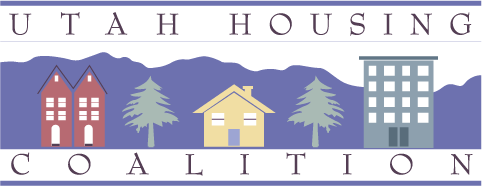National Low Income Housing Coalition - Coronavirus Housing and Homelessness Resources
National Low Income Housing Coalition - Weekly Webinars on COVID-19 Homelessness & Housing
Preliminary Analysis: Eviction Filing Trends After the CDC Moratorium Expiration
In this brief, the Eviction Lab uses data from their Eviction Tracking System, which monitors eviction filings in 31 cities and 6 states across the country, to examine what has happened after the Supreme Court’s decision. Since the CDC moratorium ended, landlords have filed a growing number of cases, though still far fewer than are seen in a typical, pre-pandemic year. But when you look at the numbers city-by-city, the landscape is more complex: while filings increased rapidly in places like Houston and Milwaukee, they remain unchanged in others, such as New York. The report also explores some of the factors that may help to explain patterns observed after the federal moratorium ended.
Treasury Emergency Rental Assistance Programs in 2021: Preliminary Analysis of Program Features and Spending Performance
Several important points emerge from this analysis. In general, giving applicants the ability to self-attest to eligibility criteria is one clear option for programs to reduce application barriers and improve their ability to expend funds. Other promising practices include categorical eligibility and fact-specific proxy, in which programs use eligibility for other income-based programs or other facts to determine a household’s eligibility for ERA. Read the December 2021 Research Report
Findings and Lessons from Two National surveys of Landlords
The COVID-19 pandemic has resulted in profound economic hardship for the nation’s renters; the most recent Census Bureau Household Pulse Survey found that nearly 8 million renters were behind on rent. While there is significant concern about whether these distressed renters will be able to stay stably housed, missed rental payments also have implications for the nation’s landlords. But much less is known about how property owners have fared and how they have responded to this significant shortfall in rent collections.
Helping to fill this information void, two recent national surveys provide valuable information about rental owners and how the pandemic has impacted their financial circumstances and property management practices: one published by the Joint Center for Housing Studies (JCHS), the other by UC Berkeley’s Terner Center for Housing Innovation. In “The Impact of the Pandemic on Landlords: Evidence from Two National Surveys,” a new study published as part of the Housing Crisis Research Collaborative, we synthesize (along with our co-authors Nathaniel Decker and Elijah de la Campa) findings from these two papers and highlight policy implications for both current and long-term efforts to support renters and stabilize rental markets through times of financial crisis.
A set of three reports from the United States Census Bureau--Income and Poverty in the United States: 2020, Health Insurance Coverage in the United States: 2020, and The Supplemental Poverty Measure: 2020—examine trends in household income and the important effects of social welfare programs in 2020. Median household income fell from $69,560 in 2019 to $67,521 in 2020. Using the official poverty rate, the number of people in poverty increased by 3.3 million, representing a one percentage point increase to a rate of 11.4%. At the same time, the Supplemental Poverty Measure (SPM), which incorporates post-tax transfers and government programs that assist low-income families, fell: the poverty rate for 2020 using the SPM was 9.1%, 2.6 percentage points lower than in 2019. This divergence reflects the extent to which stimulus payments, Social Security, refundable tax credits, housing subsidies, and other federal aid succeeded at keeping millions of people out of poverty. Read more of this article here
State of Rental Housing in Salt Lake County during COVID-19
In conjunction with Salt Lake County, Utah Housing Coalition (UHC) has worked to better understand the impact that the COVID-19 pandemic has had on housing needs and how the city, county, state and federal funds were used to keep people housed in a time of illness and economic hardship. Additionally, an exploration of the financial toll that eviction proceedings will have on families during the pandemic was done, and finally, a brief analysis of the cost burden of eviction to the county and the state in the form of emergency shelter, health care, emergency services and other state-funded resources for unhoused individuals and families was conducted. Read the full report
Learning from Emergency Rental Assistance Programs: Lessons from Fifteen Case Studies
The U.S. Department of Treasury Emergency Rental Assistance program, as established by the most recently passed coronavirus relief package, includes $25 billion in rental assistance, which can cover an eligible household’s rent and utilities for a maximum of 15 months, including past due and future payments. At least 35 programs, nearly half of which are statewide, are already accepting applicants. Another 400 state and local jurisdictions and nearly 240 tribal governments, are either ramping up their existing rental assistance programs to get this unprecedented volume of funds out the door or preparing to implement rental assistance for the first time.
COVID-19 Emergency Rental Assistance: Analysis of a National Survey of Programs
While estimates of the exact amount vary, studies agree that American renters now owe tens of billions of dollars in back rent, while many others have exhausted their savings, borrowed from family or friends, or used credit cards to keep up.1 The Coronavirus Aid, Relief, and Economic Security (CARES) Act, enacted in March 2020, provided two main funding streams that states and local jurisdictions could use for emergency rental assistance during these unprecedented times: Coronavirus Relief Funds (CRF) and Community Development Block Grants (CDBG-CV). As of midOctober, 44 states (including Washington, D.C.) and 310 local jurisdictions chose to devote roughly $3.9 billion to emergency rental assistance, which falls significantly short of most estimates of COVID-19- related needs. Read the report
Housing Precarity & the COVID-19 Pandemic
The COVID-19 pandemic has necessitated the adoption of a number of policies that aim to reduce the spread of the disease by promoting housing stability. Housing precarity, which includes both the risk of eviction and utility disconnections or shut-offs, reduces a person’s ability to abide by social distancing orders and comply with hygiene recommendations. This report finds that policies that limit evictions are found to reduce COVID-19 infections by 3.8% and reduce deaths by 11%. Moratoria on utility disconnections reduce COVID-19 infections by 4.4% and mortality rates by 7.4%. Had such policies been in place across all counties (i.e., adopted as federal policy) from early March 2020 through the end of November 2020, our estimated counterfactuals show that policies that limit evictions could have reduced COVID-19 infections by 14.2% and deaths by 40.7%. Read the working paper.

